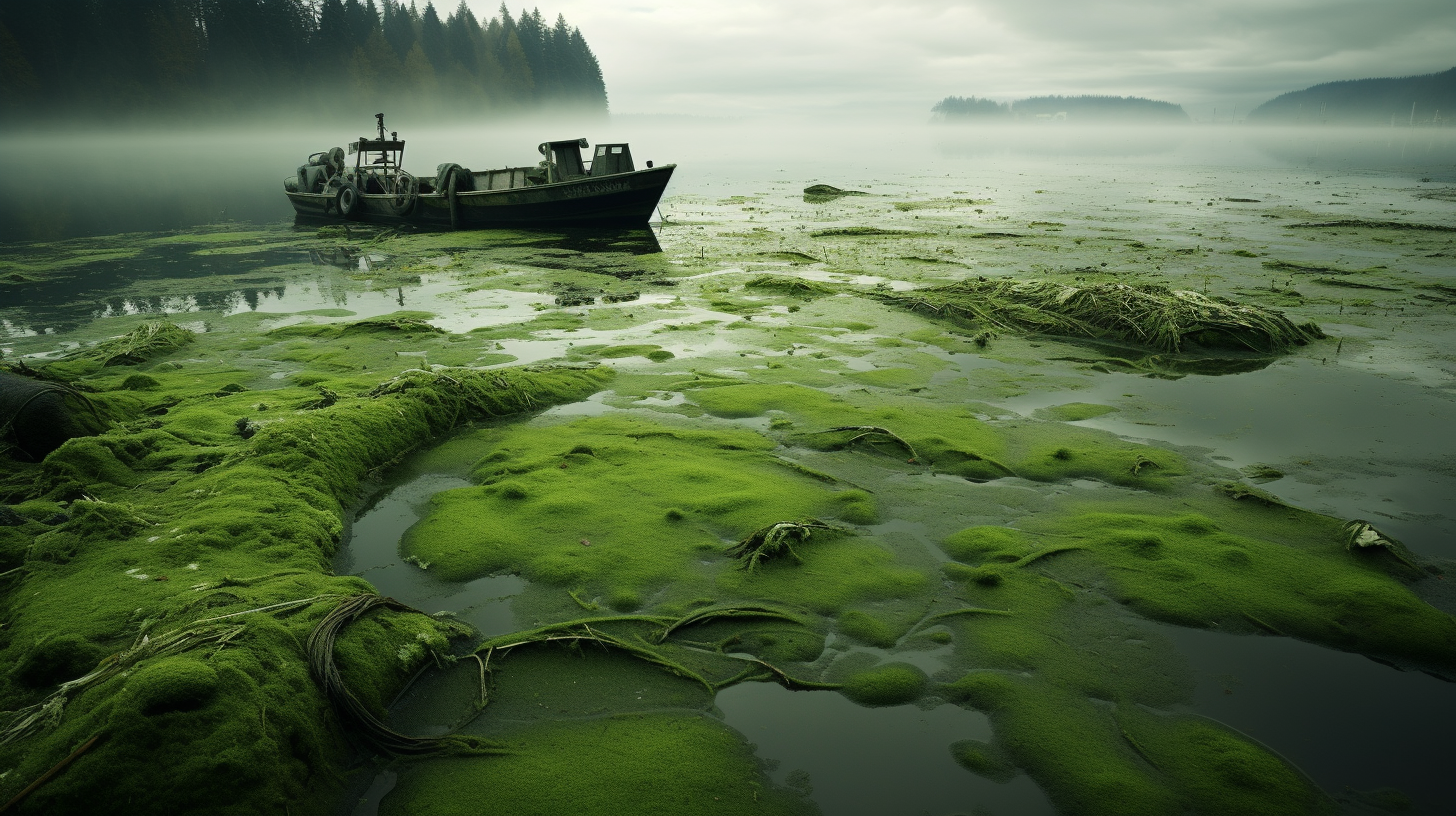In a world where the cries of environmentalists have become the whispers of ghosts in the wind, our waters are succumbing to a silent but deadly onslaught. Welcome to the age of toxic blooms, where the vitality of marine life is being smothered by the suffocating embrace of algae gone rogue. Beneath the emerald sheens lie waters that grieve the loss of life within, a dark tale of beauty turned beast.
It begins idyllically enough, with warm sunrays nurturing the surface and a gentle upwelling of nutrients from the abyssal depths. But this balanced aquatic ballet soon distorts into chaos. Aided by a concoction of excessive nutrients from agricultural runoff and unnaturally heated waters, benign algal species transform into rampant tides of harmful algal blooms (HABs). These toxic interlopers unleash a suite of poisons, turning the water into a deadly potion for fish, wildlife, and humans alike.
The story is no longer about isolated incidents, but a global phenomenon that wreaks havoc across our blue planet. From the Gulf of Mexico to the Baltic Sea, entire ecosystems face an invisible enemy. Regions once celebrated for their maritime heritage and bountiful seas are now marked with the eerie still of lifeless waters.
Through the lens of this dystopian present, HABs serve as grim storytellers, whispering tales of ecosystems that have collapsed under the invisible weight of their blossom. We peer into the maw of a fish, a gape that once would have teemed with life – now nothing more than an empty chasm. Birds that used to dance atop waves, now lie motionless on a carpet of algae, victims of the feast turned fatal.
Researchers and scientists, the unsung heroes in this somber narrative, strive to unlock the harbingers that usher in these devastating blooms. They draw attention to how climate disruption fuels algal fury, a critical piece of the puzzle, giving voice to a catastrophic symphony. And yet, in this dark future, their warnings are like screams into the void – heard, yet unheeded.
The human toll mirrors the environmental devastation. Coastal communities struggle as tourism disappears like mist over troubled waters. Fisheries, once the lifeblood of entire towns, now face shutdowns, with catches that bring more peril than profit. The local economies crumble, a domino effect initiated by the greed and neglect of generations past.
In this apocalyptic narrative, there are no heroes, no last-minute saviors wielding the sword of innovation to turn the tide. Instead, dystopian storytellers must content themselves with recording decline into history, offering only a cautionary tale to those who may still effect change in the real world.
Imagine our seas as a canvas, now smeared with toxic paint, a masterpiece obscured by our own hand. In a final act of defiance, the oceans roar their displeasure, a cacophony of waves and wind that cannot cleanse the stains we’ve made.
Tales of Toxic Bloom might be dismissed as mere fables in another time, another world. But here, they’re testament to the Earth’s lament, narratives of nature’s broken covenant with mankind, and a haunting reminder of what we stand to lose if our inaction continues unchecked.
